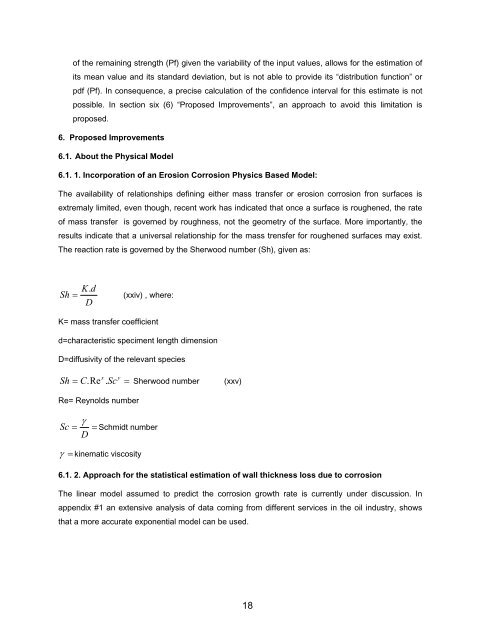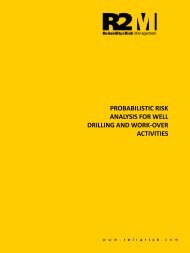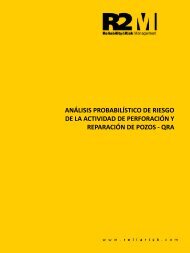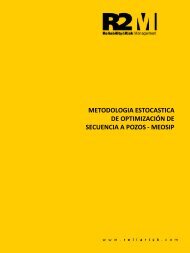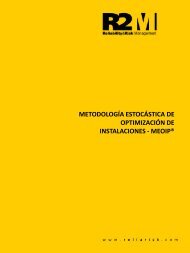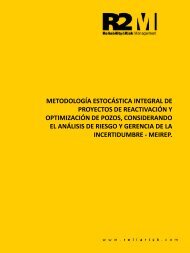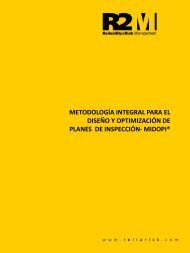Remaining Life of a Pipeline
You also want an ePaper? Increase the reach of your titles
YUMPU automatically turns print PDFs into web optimized ePapers that Google loves.
<strong>of</strong> the remaining strength (Pf) given the variability <strong>of</strong> the input values, allows for the estimation <strong>of</strong><br />
its mean value and its standard deviation, but is not able to provide its “distribution function” or<br />
pdf (Pf). In consequence, a precise calculation <strong>of</strong> the confidence interval for this estimate is not<br />
possible. In section six (6) “Proposed Improvements”, an approach to avoid this limitation is<br />
proposed.<br />
6. Proposed Improvements<br />
6.1. About the Physical Model<br />
6.1. 1. Incorporation <strong>of</strong> an Erosion Corrosion Physics Based Model:<br />
The availability <strong>of</strong> relationships defining either mass transfer or erosion corrosion fron surfaces is<br />
extremaly limited, even though, recent work has indicated that once a surface is roughened, the rate<br />
<strong>of</strong> mass transfer is governed by roughness, not the geometry <strong>of</strong> the surface. More importantly, the<br />
results indicate that a universal relationship for the mass trensfer for roughened surfaces may exist.<br />
The reaction rate is governed by the Sherwood number (Sh), given as:<br />
K.<br />
d<br />
Sh = (xxiv) , where:<br />
D<br />
K= mass transfer coefficient<br />
d=characteristic speciment length dimension<br />
D=diffusivity <strong>of</strong> the relevant species<br />
Sh = C. Re<br />
x . Sc y = Sherwood number (xxv)<br />
Re= Reynolds number<br />
γ<br />
Sc = = Schmidt number<br />
D<br />
γ = kinematic viscosity<br />
6.1. 2. Approach for the statistical estimation <strong>of</strong> wall thickness loss due to corrosion<br />
The linear model assumed to predict the corrosion growth rate is currently under discussion. In<br />
appendix #1 an extensive analysis <strong>of</strong> data coming from different services in the oil industry, shows<br />
that a more accurate exponential model can be used.<br />
18


